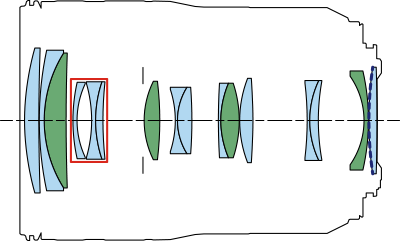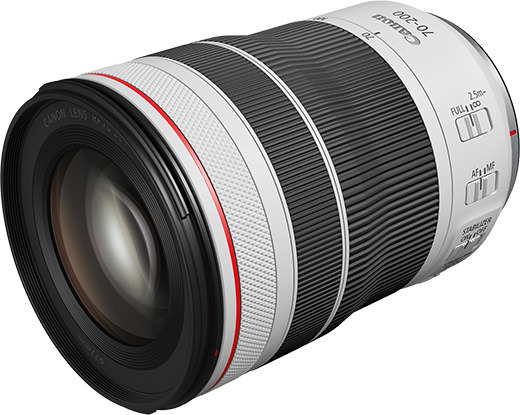- Specifications
- Block diagram
| Marketed | March 2021 |
| Original Price | Open price |
| Lens Construction (group) | 11 |
| Lens Construction (element) | 16 |
| No. of Diaphragm Blades | 9 |
| Minimum Aperture | 32 |
| Closest Focusing Distance (m) | 0.6 |
| Maximum Magnification (x) | 0.28 (at 200mm) |
| Filter Diameter (mm) | 77 |
| Maximum Diameter x Length (mm) | Approx. 83.5×119.0 |
| Weight (g) | Approx. 695 |
Utilizing the wide diameter and short back focus1 made possible by the RF mount, a large-diameter lens can be placed close to the imaging plane on the camera side, resulting in a more compact optical configuration. What’s more, thanks to an extending-barrel zoom design and effective positioning of mechanical and lens elements, the new lens realizes the same high image quality of the EF 70-200mm f/4L IS II USM (released in June 2018) while achieving a significantly more compact and lightweight body—the shortest and most lightweight2 lens of its kind.
The RF70-200mm F4 L IS USM features an optical design that incorporates 16 elements in 11 groups, including four UD3 (Ultra Low Dispersion) lenses, mitigating color fringing caused by chromatic aberration and various other aberrations that result in image degradation, to achieve high image quality across the entire 70 mm to 200 mm zoom range. In addition, the lens features two lens groups comprising a focus lens and floating lens4 that are moved independently by two Nano Ultra-Sonic Motors (USM) for optimal control. Through the use of this electronic floating focus system, the lens delivers greater image quality at close distances and makes possible a minimum focusing distance of 0.6 m across the entire zoom range.
When attached to camera bodies that feature in-body image stabilization5, the image stabilization of the RF70-200mm F4 L IS USM and camera are able to work in conjunction. Paired with the EOS R5, the lens can provide users with 7.5 shutter speed stops6 of image stabilization. Even for the EOS R (released in October 2018), which does not feature image stabilization, the lens provides five shutter speed stops6 of image stabilization.
1 A short distance between the optical axis from the vertex of the rear lens element to the imaging plane when focused to infinity.
2 Among f/4 aperture lenses with a focal length of 70-200 mm for interchangeable-lens cameras. World’s shortest refers to when the lens is retracted. As of November 3, 2020. Based on a Canon survey.
3 A lens element employing ultra-low dispersion glass.
4 Lenses that move in conjunction with changes in focal length to correct aberrations.
5 Compatible bodies: the EOS R5 (released in July 2020) and the EOS R6 (released in August 2020). As of November 4, 2020.
6 When used at a focal length of 200 mm. Based on CIPA standards. Applies to yaw/pitch directions.

UD lenses IS unit ASC


